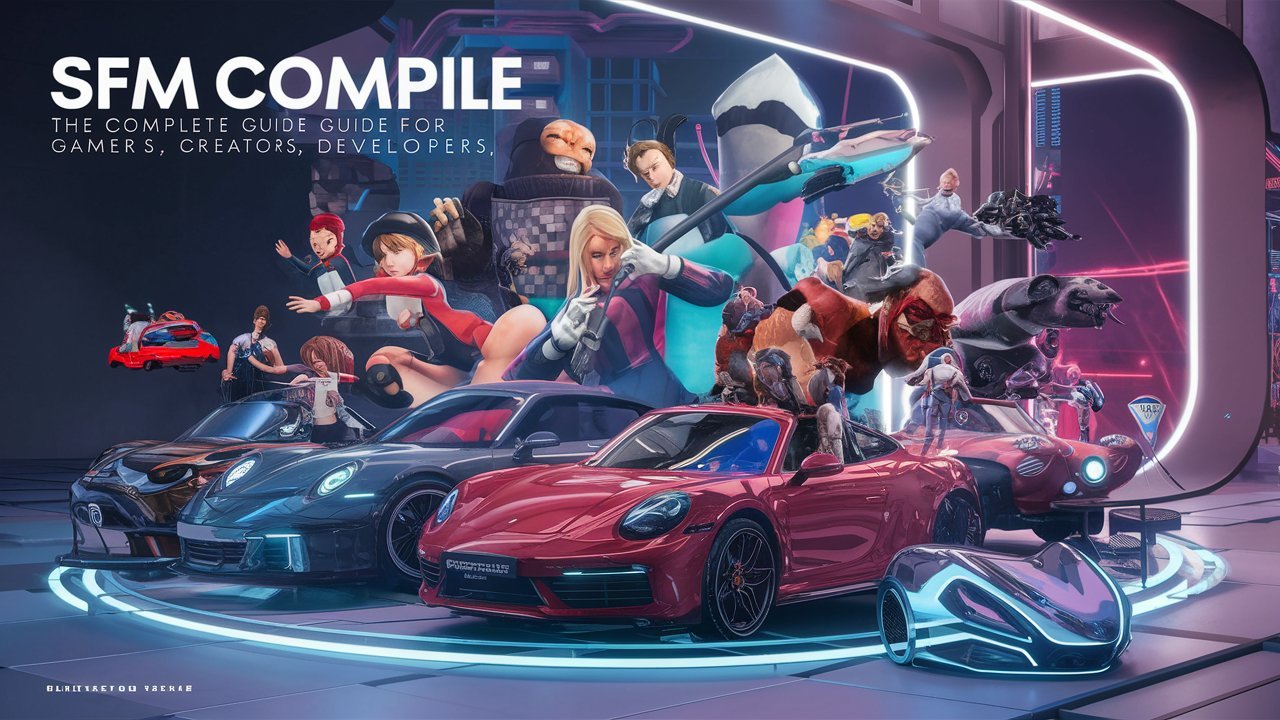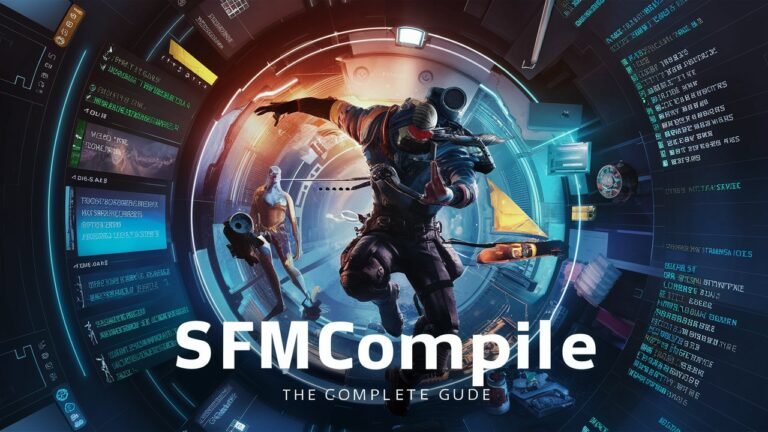The term SFMCompile is widely recognized in the gaming and Source Filmmaker (SFM) community. It refers to the process of compiling models, textures, and assets into a format usable by Source Filmmaker or other Source Engine-based games such as Team Fortress 2, Half-Life 2, and Garry’s Mod. Mastering SFMCompile is essential for creators who want to design unique 3D models, animations, or machinima projects. This guide provides a comprehensive, detailed, and practical explanation of everything you need to know about SFMCompile, covering tools, workflows, best practices, and solutions to common issues.
What is SFMCompile?
SFMCompile is the act of taking 3D models, meshes, and textures created in third-party software like Blender, Maya, or 3ds Max and converting them into the Source Engine format. This process involves using tools such as Crowbar, VTFEdit, and Source SDK to generate the final model files (commonly .mdl, .vtf, .vmt) that can be imported into Source Filmmaker.
The goal of SFMCompile is to ensure compatibility with SFM and maintain high-quality visuals without errors. Without compilation, models created externally cannot be used in SFM.
Essential Tools for SFMCompile
When working with SFMCompile, creators rely on a set of powerful tools. Each has a unique role in the workflow:
-
Crowbar – A widely used compiling and decompiling tool for Source Engine models. It enables creators to transform source files into
.mdlfiles that SFM can recognize. -
VTFEdit – Converts textures and images into Valve Texture Format (VTF), making them usable within the engine.
-
Blender Source Tools – An addon for Blender that exports models directly into Source-friendly formats, streamlining the compiling process.
-
QC Files – Text-based files that define how models are compiled, including hitboxes, bodygroups, bones, and material paths.
-
Source SDK – The official Valve development kit containing tools necessary for model compilation and testing within the engine.
These tools form the foundation of any successful SFMCompile workflow.
Step-by-Step Guide to SFMCompile
Performing SFMCompile requires following a structured workflow to ensure models are functional and optimized for SFM:
1. Preparing the 3D Model
Before compiling, ensure the model is optimized:
-
Clean up unused vertices and polygons.
-
Apply transformations (scale, rotation, and position).
-
Assign proper bone weights for animations.
-
Export the model in SMD or DMX format.
2. Creating a QC File
The QC (QuakeC) script file dictates how the model is compiled. This includes:
-
Model name and directory path.
-
Physics collision mesh setup.
-
Bodygroup definitions for customization.
-
Animation sequences.
3. Compiling with Crowbar
Crowbar is then used to process the QC file and generate .mdl files. The model is now recognized by Source Filmmaker.
4. Adding Textures
Textures are converted to VTF files using VTFEdit. A VMT (Valve Material Type) file is then created to define how the texture interacts with the model (shaders, reflections, transparency, etc.).
5. Importing into SFM
Finally, place the compiled model and textures in the SFM models directory. The model is now ready to be loaded into Source Filmmaker for animation projects.

Common Issues in SFMCompile and How to Fix Them
Even experienced creators face challenges during the SFMCompile process. Below are frequent problems and their solutions:
-
Model not appearing in SFM: Verify QC paths and check if the compiled
.mdlfile is in the correct directory. -
Textures missing or appearing purple/black: Ensure VTF and VMT files are in the correct
materialsdirectory and that file paths match the QC definitions. -
Model is distorted or broken: Recheck bone weights and transformations before exporting.
-
Compile errors in Crowbar: Double-check the QC syntax, especially directory paths and bodygroup definitions.
Mastering these troubleshooting steps ensures a smooth compilation workflow.
Why SFMCompile is Important for Creators
SFMCompile is not just a technical requirement—it unlocks creative freedom for filmmakers, animators, and modders. By compiling custom models, creators can:
-
Bring unique characters and props into their animations.
-
Customize games like Team Fortress 2 and Garry’s Mod with new assets.
-
Enhance storytelling with tailor-made environments.
-
Share custom models with the community, fostering collaboration.
The ability to compile models expands the boundaries of creativity and ensures projects stand out with originality.
Best Practices for SFMCompile
To achieve professional-quality results with SFMCompile, creators should follow these best practices:
-
Always name files and directories logically to avoid path conflicts.
-
Use high-resolution textures optimized for performance.
-
Test models in-game or in SFM before finalizing.
-
Keep a backup of original source files in case recompilation is necessary.
-
Document QC scripts for easier adjustments in future updates.
These practices minimize errors and streamline the entire compilation process.
The Future of SFMCompile
As technology advances, the SFMCompile process is becoming more user-friendly. New plugins for Blender and community-driven tools simplify model preparation, reducing the learning curve. With the growing popularity of machinima, virtual filmmaking, and modding, SFMCompile will continue to be a vital skill for both hobbyists and professional creators.
Conclusion
Mastering SFMCompile is a critical step for anyone serious about creating with Source Filmmaker or modifying Source Engine games. From preparing models and textures to compiling with Crowbar and troubleshooting errors, each step is essential for producing high-quality content. By following best practices and leveraging powerful tools, creators can unlock endless possibilities in animation and game modification.
FAQs About SFMCompile
Q1: What file formats are required for SFMCompile?
A1: Models must be exported as SMD or DMX, textures as VTF, and defined with VMT material files.
Q2: Can I compile models without Crowbar?
A2: Yes, but Crowbar is the most popular tool due to its reliability and simplicity. Other options include command-line compilers in the Source SDK.
Q3: Why is my model invisible in SFM after compiling?
A3: The issue usually lies in incorrect QC paths or misplaced .mdl files. Double-check directories and recompile.
Q4: How can I add animations to compiled models?
A4: Animations must be defined in the QC file using $sequence commands and exported from your 3D software as separate SMD/DMX files.
Q5: Is SFMCompile beginner-friendly?
A5: While it has a learning curve, beginners can start with simple models and gradually advance. Plenty of tutorials and community forums provide guidance.
